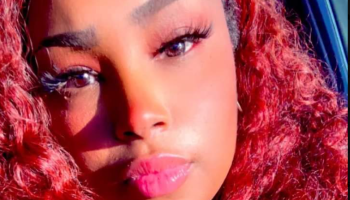Abigail Fisher Trolls Us Again In Fisher V. University of Texas

Source: Mark Wilson / Getty
Remember Ms. Fisher, the young White woman who applied to University of Texas (UT) in 2008 and sued because she was rejected admission?
Well the Supreme Court has resumed in her case now that an appeals court has ruled in favor of the university, saying that UT had constitutionally been using race as a determining factor in its admissions process. This essentially was a middle finger to Fisher who complains that she was rejected because she’s White and that she should have been given admittance over other students of color who were admitted with lower grades, standardized testing scores and/or involvement in extracurricular activities.
Fisher had applied to the university in its program that automatically grants admission to any public university that a student chooses if they graduate in the top 10 percentile of their state. However, the university says that Fisher wasn’t actually in the top 10 percentile, and that she was then considered in its “holistic review” process which looks at students’ overall profile to determine if they should be given acceptance. Race is one of the final determining factors that admissions counselors use to decide if a student will be accepted. Ultimately, it was decided that Fisher’s grades and test scores were too low for her to get into the school.
Fisher is justifying her case by saying the university’s holistic review is unconstitutional, as it conflicts with the Fourteenth Amendment’s Equal Protection clause. Supporters of Fischer add that affirmative action is outdated, ineffective and unfair to other students. Essentially, Fisher’s legal team’s goal is to get the court to decide that affirmative action isn’t tailored enough or necessary to the admissions process to produce a diverse population of students that are worth being on campus. Fisher’s legal team also argues that the university uses affirmative action as a cover up for accepting students of color with lower academic standing that come from wealthy families.
But UT’s lawyers are calling Fisher’s defense chicken shit. Other white applicants with identical or lower scores were admitted that year while Black and Latino students with better scores were denied admittance, too. They also point out that students coming through holistic review generally have higher SAT scores than top 10 percenters. Finally, there’s no merit to Fisher’s case because she didn’t suffer any injury compelling enough to bring a case before Supreme Court justices—especially since she eventually graduated from another college, Louisiana State University.
The university’s lawyers explain that the 10 percentile program (which accounts for three-fourths of its student body) isn’t enough to provide diversity on campus because high schools are already highly segregated by race in Texas because of how districts are draw. As a result, the 10 percentile program is too one-dimensional to give students of diverse backgrounds a fair chance at acceptance.
This is why UT has the holistic review process to garner the remaining quarter of its student population. Holistic review allows for race to be considered in addition to applicants’ academic achievements and extracurricular activities. There’s hard evidence proving that including race as an explicit factor in admissions is crucial to creating diversity. In 1996 a prior court case had ruled that race couldn’t be used in admissions decisions, forcing counselors to use race-neutral practices in deciding on applicants during holistic review instead. As a result, the number of minority students dropped by a whopping 40 percent. UT’s student population was only made more diverse again when the decision had been reversed in 2003.
Fisher first filed her case with the Supreme Court in 2013. At the time, the justices issued a short opinion essentially saying the lower court that initially decided on Fisher’s case put too much faith into the university’s use of race for diversity. The justices then sent the case to an appeals court to determine if the university’s use of race was limited or defined enough to be valid in its admissions process.
The appeals court upheld previous decisions made in favor of the university. Given the opposing views Justice Sonia Sotomayor versus like her more conservative colleagues like Clarence Thomas and Antonin Scalia, the decision could go either way. If the court rules in favor of Fischer, it could limit public university’s use of race in consideration of applicants at other schools nationwide.
Justices are to decide on the case by next year. The case comes at a highly unusual time, as the country just witnessed a wave of protests, sit-ins and social media conversations highlighting the rampant discrimination and institutional racism that students of color face on predominantly White college campuses.
[SOURCES: Reuters, New York Times, CNN, NPR]
RELATED LINKS:
Chicago Cops Received 1-Day Suspensions After Tasering & Dragging Mentally Ill Man In Holding Cell
White House, GOP Join Forces Against Trump And His Raging Islamophobia
Daniel Holtzclaw’s Lawyers Blame Alleged Rape Victims Minutes Before The Jury Meets For The Case
Stay Woke: Everything You Need To Know About The 2 Supreme Court Cases Affecting Black Women This Week was originally published on hellobeautiful.com











